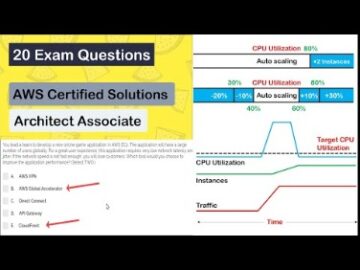
You may use accounting software packages, such as QuickBooks Online to set up contra accounts. Simply hit Control + N under the Chart of Accounts or Edit, then click New (to create a new account). Companies are recommended to use contra asset accounts for their fixed assets. It’s highly likely that your books will benefit from this process in terms of clarity, transparency, and the amount of time it takes to do accounting. Obsolete inventory or obsolete inventory reserves is another popular type of contra asset accounts.

The company’s contra asset account will record unusable or obsolete assets. Assets can become obsolete or unusable for a variety of reasons, such as getting sold or retired because of wear or inefficiency. Obsolete inventory accounts are very important in dealing with this, especially when many smaller businesses struggle with obsolete assets regularly. The importance of contra asset accounts is generally to reduce the value of some related account. The contra asset account pulls the value of the combined accounts down, which in turn decreases the value of the second account as well, which is a normal account.
Free Financial Statements Cheat Sheet
A contra asset account is an account that opposes the balances of other asset accounts. As mentioned, a company will usually have debit balances in its asset accounts. Inventory obsolescence is an expense account, while the allowance for obsolete inventory is a contra asset account, which aims to reduce the inventory valuation on your balance sheet. Your bank account, the inventory you currently stock, the equipment you purchase, and your accounts receivable balance are all considered asset accounts. Contra liability accounts are special accounts in the liabilities section of the balance sheet.
A Beginner’s Guide to Using Contra Asset Accounts – The Motley Fool
A Beginner’s Guide to Using Contra Asset Accounts.
Posted: Wed, 18 May 2022 16:59:21 GMT [source]
Including contra revenue accounts is important in the income statement because it shows the original amount of sales the firm has made, along with any factor that has reduced that amount. Note that the contra liability account has a positive balance (a debit balance), and the liability account normally has a credit balance. Hence, the book value of the liability will be the credit balance of the liability account minus the debit balance of its contra liability counterpart. Note that in accounting, the term “book value” is also used interchangeably with net value.
What is Contra Account?
Machinery, physical space, equipment, vehicles, etc., are some examples of common fixed assets. Ultimately, an accumulated depreciation contra asset account helps the company reduce the gross amount of all the fixed assets within a company. Contra equity is a general ledger account with a debit balance that reduces the normal credit balance of a standard equity account to present the net value of equity in a company’s financial statements.
- Contra asset accounts are hugely beneficial for nearly all types of companies.
- At the end of year 20, the car and the accumulated depreciation accounts will be written off from the balance sheet, as the car will be a fully depreciated asset.
- Make sure that you report contra accounts on the same financial statement as the related accounts.
- For example, it is not very useful to show the PPE cost account and the related accumulated depreciation account separately on the balance sheet.
- It is not classified as a liability since it does not represent a future obligation.
Contra liability accounts are less commonly used than contra asset accounts. Contra liability accounts are mainly used by corporations that issue bonds frequently. That is because some of the bonds are issued at a discount, so this reduces the balance of their bonds payable. Key examples of contra asset accounts include allowance for doubtful accounts and accumulated depreciation. Allowance for doubtful accounts reduce accounts receivable, while accumulated deprecation is used to reduce the value of a fixed asset.
Types of Contra Assets
Sometimes, we have an ancillary balance whose normal balance is the same as that of the parent account. For example, we need to keep the face value of a bonds payable and the premium amount in separate ledger accounts even though both have credit balances. A separate account used in such a situation is sometimes called a adjunct account. The most common contra equity account is called “treasury stock.” This special account decreases the number of shares outstanding in the market because the company repurchases some of the shares from its buyers. Therefore, it reduces the value of shareholders’ equity by the amount paid for those repurchased stocks. Accountants use contra accounts rather than reduce the value of the original account directly to keep financial accounting records clean.
Most accounts receivable would just be the time between purchase and credit card settlement. If you’re valuing a low-growth company based on its equipment assets, you want to use the net value to be conservative. On the other hand, if you’re looking at a high-flying growth stock that reports new revenue growth records each quarter but has a massive allowance for doubtful accounts, there may be problems ahead. The second entry will be accumulated depreciation, which will be in credit.
Spirit AeroSystems Reports Second Quarter 2023 Results – PR Newswire
Spirit AeroSystems Reports Second Quarter 2023 Results.
Posted: Wed, 02 Aug 2023 11:30:00 GMT [source]
Whereas assets normally have positive debit balances, contra assets, though still reported along with other assets, have an opposite type of natural balance. As you saw in the example, contra accounts can be an important part of your financial statement analysis, but they are hard to find. Companies bury them in the footnotes and often don’t break out the actual calculation.
Contra asset definition
The Allowance for Doubtful Accounts is directly related to the asset account entitled Accounts Receivable. Therefore, the net amount of the accounts receivable that is expected to turn to cash is $38,000. Contra liability, equity, and revenue accounts have natural debit balances.
- Sometimes the balances in the two accounts are merged for presentation purposes, so that only a net amount is presented.
- The Allowance for Doubtful Accounts is directly related to the asset account entitled Accounts Receivable.
- Offsetting the asset account with its respective contra asset account shows the net balance of that asset.
- By stating this information separately in a contra asset account, a user of financial information can see the extent to which a paired asset should be reduced.
Still, it is important when possible to consider how the net accounts are calculated and be wary of companies that are reporting a ton of bad debts. The equity section of the balance sheet is where the shareholder’s claims to assets are reported. The main contra equity account is treasury stock, which is the balance of all stock repurchased by the company. When a company repurchases shares, it increases the fractional ownership of all remaining shareholders. Contra asset accounts are, as the name implies, accounts that are contrary to popular belief.
How to Set up Contra Accounts
Normal asset accounts have a debit balance, while contra asset accounts are in a credit balance. Therefore, a contra asset can be regarded as a negative asset account. Offsetting the asset account with its respective contra asset account shows the net balance of that asset.

The balance sheet will show a gross fixed assets value, a contra account value for accumulated depreciation, and a net value. All three values can be useful for investors depending on what they’re looking for. They are also helpful for keeping the books balanced and creating a clear trail of financial breadcrumbs for historical review and reporting. For instance, it is common to keep the purchase price of a piece of equipment as a historical cost in the debit asset account when it comes to fixed assets. A contra liability is a general ledger account with a debit balance that reduces the normal credit balance of a standard liability account to present the net value on a balance sheet. Examples of contra liabilities are Discounts on Bonds and Notes Payable and Short-Term Portion of Long-Term Debt.
Create a free account to unlock this Template
A contra liability account is not classified as a liability, since it does not represent a future obligation. The same is true for other asset accounts like accounts receivable. Accounts receivable is rarely reported on the balance sheet at its net amount. Instead, it is reported at its full amount with an allowance for bad debts listed below it. Maybe more importantly, it shows investors and creditors what percentage of receivables the company is writing off.

For example, when depreciating an asset, the accumulated depreciation account is used to reduce the book value of the asset while also keeping track of the total amount of depreciation that has been posted to date. Accounts receivable do you need a section 125 plan document get one today! (A/R) has a debit balance, but the allowance for doubtful accounts carries a credit
balance. The allowance method of accounting allows a company to estimate what amount is reasonable to book into the contra account.



